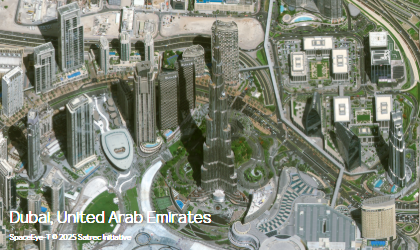Insight
Insight에 대한 설명글입니다.
[News] European customer leases SI Imaging Services’ SpaceEye-T
- #SpaceEye-T
- #European
- #Contract

SI Imaging Services' SpaceEye-T satellite view of Dubai, United Arab Emirates. Credit: Satrec Initiative via SI imaging Services
SAN FRANCISCO — South Korea’s SI Imaging Services announced a contract Sept. 2 to lease the capacity of Earth-observation satellite SpaceEye-T to a European customer.
SpaceEye-T, an optical satellite offering native resolution of 25 centimeters per pixel, reached orbit in March on a SpaceX Transporter-13 rideshare. Satrec Initiative, SI Imaging Services’ parent company, developed and owns SpaceEye-T.
SI Imaging Services did not reveal the value of the contract but the news release said it was “a double-digit million euro contract.”
The lease to the undisclosed European customer is the latest example of the growing popularity of the Satellite-as-a-Service model.

SpaceEye-T imagery of Saudia Arabia’s Jeddah airport. Credit: Satrec Initiative via SI imaging Services Credit: SI Imaging Services
The Satellite-as-a-Service model “offers clear advantages in terms of data accessibility and security, with global demand rising rapidly,” SI Imaging Services CEO Moongyu Kim said in a statement. “The agreement shows that SpaceEye-T has earned international trust, marking a significant step in joining the global space industry trend.”
SI Imaging Services advertised plans to lease the SpaceEye-T satellite in a March 30 post on Instagram. “With end-to-end encryption & automated data deletion, even SI Imaging Services cannot access your tasking records,” according to the post.
“Customers can gain exclusive access to the satellite’s image tasking capacity without the need to own the satellite,” according to the SI Imaging Services Sept. 2 news release. “It enables customers to capture imagery over their regions of interest and receive data in near real-time.”









